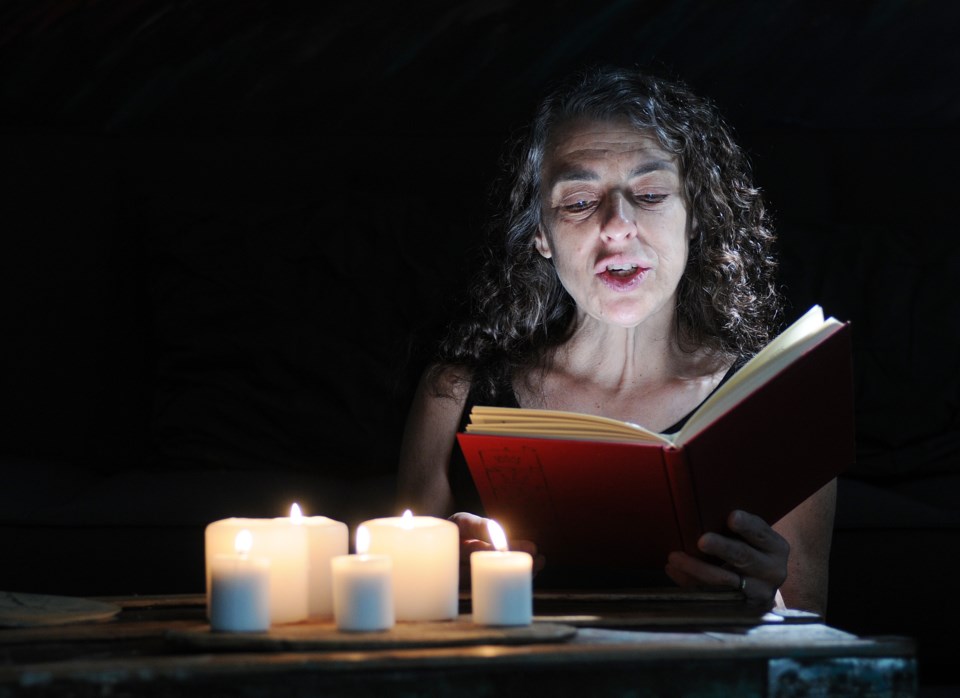When the sun goes down Saturday evening, an unusual psycho-spiritual process will unfold at an East Vancouver synagogue.
In the Jewish calendar, the new day begins at sundown. Shabbat, the Sabbath, begins at sundown Friday and closes at sundown Saturday. This week, the closing of Shabbat will usher in Tisha b’Av, the ninth day of the lunar month of Av.
Rabbi Hannah Dresner, the spiritual leader of Or Shalom synagogue, recently arrived in Vancouver from Berkeley, Calif. She has a background in academia, performance and arts — and as a rabbi ordained less than two years ago, she intends to bring her broad experience to the marking of this holy day, a time when Jews confront the accumulated grief of millennia.
“Traditionally, Tisha b’Av is a kind of historical commemoration of a whole bunch of calamities — all kinds of calamities — that have befallen the Jewish people, which, in the mythos, all happen on the same date somehow,” she explains. The foundational disasters were the destructions in Jerusalem of the First Temple, by the Babylonians in 538 BCE, and the Second Temple, by the Romans in 70 CE. In their time, the
Great Temples in Jerusalem were considered the places of closest connection to the divine. Today’s Western Wall is a remnant of that spiritual centre.
Broader interpretations of the holiday overlay it with successive disasters in Jewish history, including expulsions from medieval Europe. “Some say even the assassination of the Archduke Franz Ferdinand, which could be thought to be the beginning of the unraveling of pre-Holocaust conditions for Jews in Europe,” says Dresner.
Those who join Dresner Saturday night for Tisha b’Av services will be encouraged to consider their own grief and even share lamentations, an effort to make the ancient commemoration “viscerally personal.”
The purpose, says Dresner, “[Is] to really try to locate where our pain is right now, this year. All of the Jewish holidays come alive as we consider how their themes are reflected in our lives. What is our redemption and from what slavery, on Passover, for example. And with Tisha b’Av, what has been destroyed in us, what important ties have been severed, from what are we in exile, what do we mourn the loss of?”
Tisha b’Av does not always fall immediately after the Sabbath, but this confluence will add depth to the ceremony.
The closing hours of Shabbat are considered a time of longing.
“It’s been Shabbat, we’ve had this special closeness with the divine and now that time is kind of seeping away, that closeness, God’s presence is being resorbed and we are going to be left in our secular week to do our work,” Dresner says.
Shabbat ends with Havdallah, the ritual that separates the Sabbath from the rest of the week. It is a moment of transition marked by a ritual performed in the dark with candlelight and wine and spices, the spices meant to revive people from their restfulness and prepare for a productive week.
“Instead of turning the lights on when the shift has happened from Sabbath to weekday, at that hour of sundown, we’ll stay in the dark,” she says. “On Tisha b’Av it is traditional to sit in the dark and read the book of Lamentations in the dark by candlelight. It’s also traditional not to sit on upholstery on Tisha b’Av, so we’ll sit down on the floor with candles or flashlights and begin to hear the chanting of Lamentations in Hebrew and maybe some in English, but with the traditional melody that’s kind of a haunting melody, and at some point stop and look at a set of maybe five or 10 verses from Lamentations in English, look at the poetics, and write a parallel lament that is a lament from our own experience, what each of our brokenness might mean in this moment or one aspect of loss or yearning. After time has been given for that, we’ll see if folks would like to intersperse reading of the personal laments with the reading of the text of Lamentations, which describes the destruction of Jerusalem in a very intense way.”
When the ceremony ends, participants will part without speaking, just keeping the mood.
Some interpretations, Dresner says, see Tisha b’Av as the start of the Days of Awe, a period of introspection and penitence most associated with Rosh Hashanah, the Jewish new year, and Yom Kippur, the day of atonement.
“In the cycle of the Jewish year,” Dresner says, “people who are kind of in the groove of it really feel this time in their bones, but I think we all need that kind of permission to sit in lament, particularly if we are engaged in some kind of healing process and, again in the Jewish calendar, the idea is that we are healing into wholeness by the end of Yom Kippur some seven weeks from now. It’s always good to have a bounded, safe framework for expressing sorrow. It’s just not something that we have that much permission for.”
@Pat604Johnson



